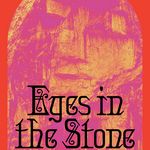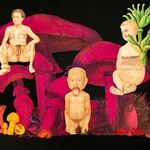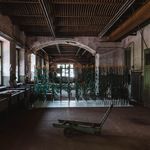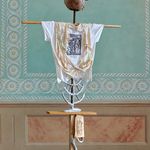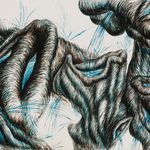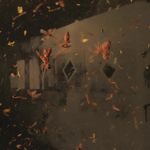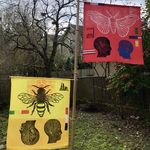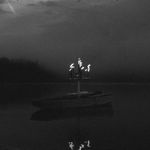EKO 9 Triennial of Art and Environment: Eyes in the Stone

EKO 9 Triennial of Art and Environment: Eyes in the Stone
Old sanatorium, Tyrševa ulica 19, Maribor
17 May−28 July 2024
opening: Friday, 17 May 2024, 19:00
artists: Saša Bezjak, Lan Breški, Ana Čavić, Ines Doujak, Herman Gvardjančič, Andrea Éva Győri, Thomas Hörl & Peter Kozek, Kier-La Janisse, Vid Koprivšek, Nina Koželj, Gašper Kunšič, Ana Likar, Eva-Maria Lopez, David Nez, Ludvik Pandur, Mila Panić, Edith Payer, Ana Pečar, Oton Polak, Janko Ravnik, Līga Spunde & Aleksandrs Breže, Dominika Trapp, Ádám Ulbert, Matjaž Wenzel and others
artistic director: Jure Kirbiš
artistic advisors: Dominika Trapp (Hungary) and Markus Waitschacher (Austria)
From folktales and the origins of modern horror in literature and film to contemporary art forms, the horror genre has always possessed the potential to address human and societal fears. With the exhibition Eyes in the Stone, we give power to the primary emotion of fear to jolt us from our numbness to seemingly failing warnings of science. The artists in the exhibition respond in form and narrative to the threatening atmosphere in nature and culture. In the new venue of the EKO Triennial – the old sanatorium of Dr Mirko Černić in the centre of Maribor – we present artworks which through use of shock, a sense of dread, disquiet and despondency, as well as critical reflection, offer a chance at catharsis in the face of environmental collapse. The old sanatorium, a modernist villa and its surrounding garden, becomes a metaphor for home. If we think of Earth as our home, then this is a house that is haunted. Freak weather events, mass extinctions, fires and floods, earthquakes, it’s as if the planet is waging revenge on its inhabitants. When moving out of this house or an exorcism is not an option, we must learn to dwell with these restless spirits. We enter this haunted house, this planet terror in order to understand and to make peace with the troubled spirits our presence on Earth has awakened. Come with us. If you dare.
Eyes in the stone are watching me, pursuing me. Protecting me? Condemning? Keeping silent? What is the girl in the rock thinking? What has she seen? What did she see that petrified her so? What has she done to turn into stone? On the northern slope of Mount Prisank in the Julian Alps, nature has carved an effigy of a young woman’s face into the side of the mountain. For millennia, the Heathen Maiden, trapped in the stone, stood sentinel over her milieu. Through centuries, oral traditions attributed many meanings to the natural formation, the face made of rock, the eyes in the stone. One story tells of a fairy who foretold a newborn would become a hunter and kill the mythical Goldenhorn, becoming rich from its golden horns. Her sisters cursed the fairy for her prophecy and imprisoned her in the mountain for eternity. In the 9th edition of the Triennial of Art and Environment, audiences and artists see themselves reflected in the Heathen Maiden. Our behaviour in her domain, in the realm of the Goldenhorn, is closely examined under her persistent gaze, in her unceasing presence. At the same time, we may recognise ourselves in her fate. Despite countless warnings, we observe helplessly the consequences of humankind's interference in nature, as if trapped in stone. The immovable, stony aura of the Heathen Maiden in the midst of environmental catastrophe creates an ominous atmosphere; a new, sinister meaning is given to the age-old gaze.
Atmosphere, escalating tension, menacing mood are some of the essential building blocks of the horror genre. Natural phenomena, forces of nature are often the means of creating an atmosphere. Weather, terrain, sounds and apparitions, flora and fauna all participate in the narrative, stirring imagination to recognise and confirm our fears in the face of the cruel indifference of existence. And when nature itself, thrown out of balance, becomes the greatest threat to man? From the very foundations of modern horror, the novel Frankenstein; or, The Modern Prometheus (1818) by the English writer Mary Shelley, the gothic atmosphere is said to be conditioned by an atmospheric event. According to legend, Shelley outlined the story of Dr Frankenstein in the rainy year without a summer. A year prior, in April 1815, Mount Tambora on the Indonesian island of Sumbawa erupted in a violent explosion. The week-long eruption, one of the greatest in centuries, released tons of volcanic dust into the upper atmosphere, which months later contributed to an odd climate in Europe. In the spring of 1816, Lord Byron and his guests, including Mary Shelley, gathered at a villa on Lake Geneva and under the influence of moody weather, German fairytales, as well as opium, told scary stories. Written in the throes of the Industrial Revolution, Frankenstein tells of a man who plays God, of technology interfering with natural processes and of a spark that lit a fire gone out of control.
At EKO 9, we draw explicit and implicit parallels between contemporary artistic practices and the horror genre, particularly in film. Horror has been part of the history of cinema since the invention of the medium; Georges Méliès' 1896 film Le Manoir du diable (The House of the Devil) is an example. Film is a visual medium where the horror genre has been thoroughly studied and classified into numerous narrowly-defined subgenres: folk horror, body horror, eco horror, apocalyptic, gothic, technological, psychological, supernatural horror, creature feature, demons, mutants, vampires, werewolves, the living dead on film, among many others. The thematic and formal framework of horror filmmakers is often analogous to the interests of contemporary artists, especially in relation to environmental concerns. An extensive film programme will therefore accompany the central exhibition of EKO 9. We invite you to screenings of the ‘70s British folk horror classic The Wicker Man, a documentary on the history of folk horror, a selection of stop motion animated shorts and the first Slovenian feature film In the Realm of the Goldenhorn from 1931.
Following the green principles of food production – a short farm-to-table supply chain – we harvested the selection of art projects in the exhibition regionally. We propose a reading of the environmental impact on artistic fertility and on the potential connections between artists and artistic expressions within diverse, yet historically, geographically and climatically intertwined cultural landscapes. As the of-the-moment epicentre of the region, the Maribor Triennial of Art and Environment, presents artworks predominantly by Slovenian, Austrian and Hungarian artists. EKO 9 artistic director Jure Kirbiš was joined by artist and curator Dominika Trapp (Hungary) and curator and mediator Markus Waitschacher (Austria) in the role of artistic advisors, and together they invited more than 30 artists from the region, caught by the eye of the girl in the stone, to take part in the exhibition.
EKO 9 is produced by UGM | Maribor Art Gallery in the framework of project EMPACT. Under the slogan “The Art of Thinking Like a Mountain” EMPACT addresses themes of creative sustainability, empathy for nature and empathic and resilient artists. Eyes in the Stone is developed as an example of a contemporary art exhibition utilising sustainable exhibition-making principles. EMPACT connects seven European partners: Cyprus University of Technology (Cyprus), Fondazione Lamberto Puggelli (Italy), Espacio Rojo (Spain), National Academy for Theatre and Film Arts (Bulgaria), Nature, Art & Habitat (Italy), Vorres Museum (Greece) and UGM | Maribor Art Gallery (Slovenia).

